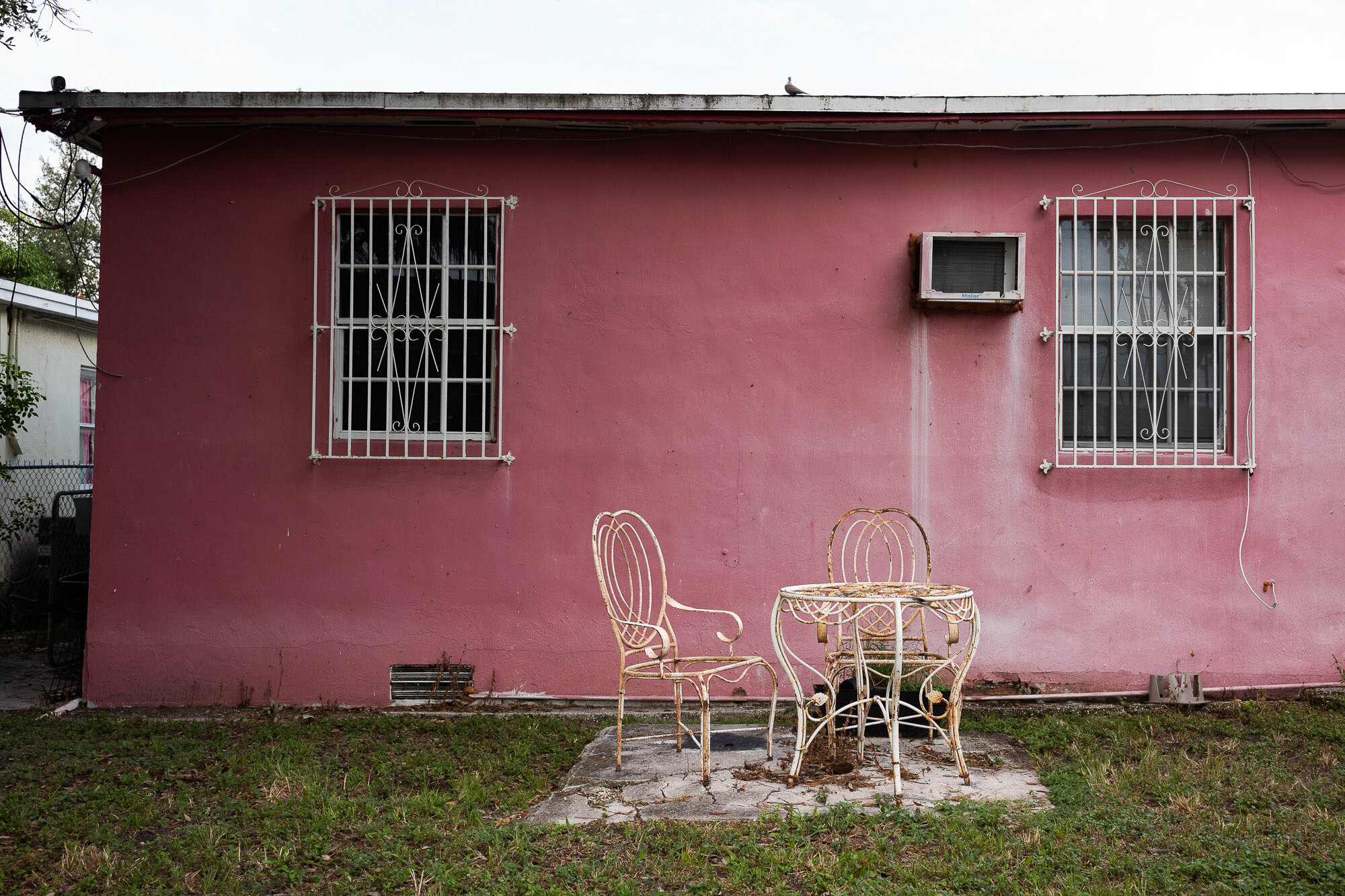

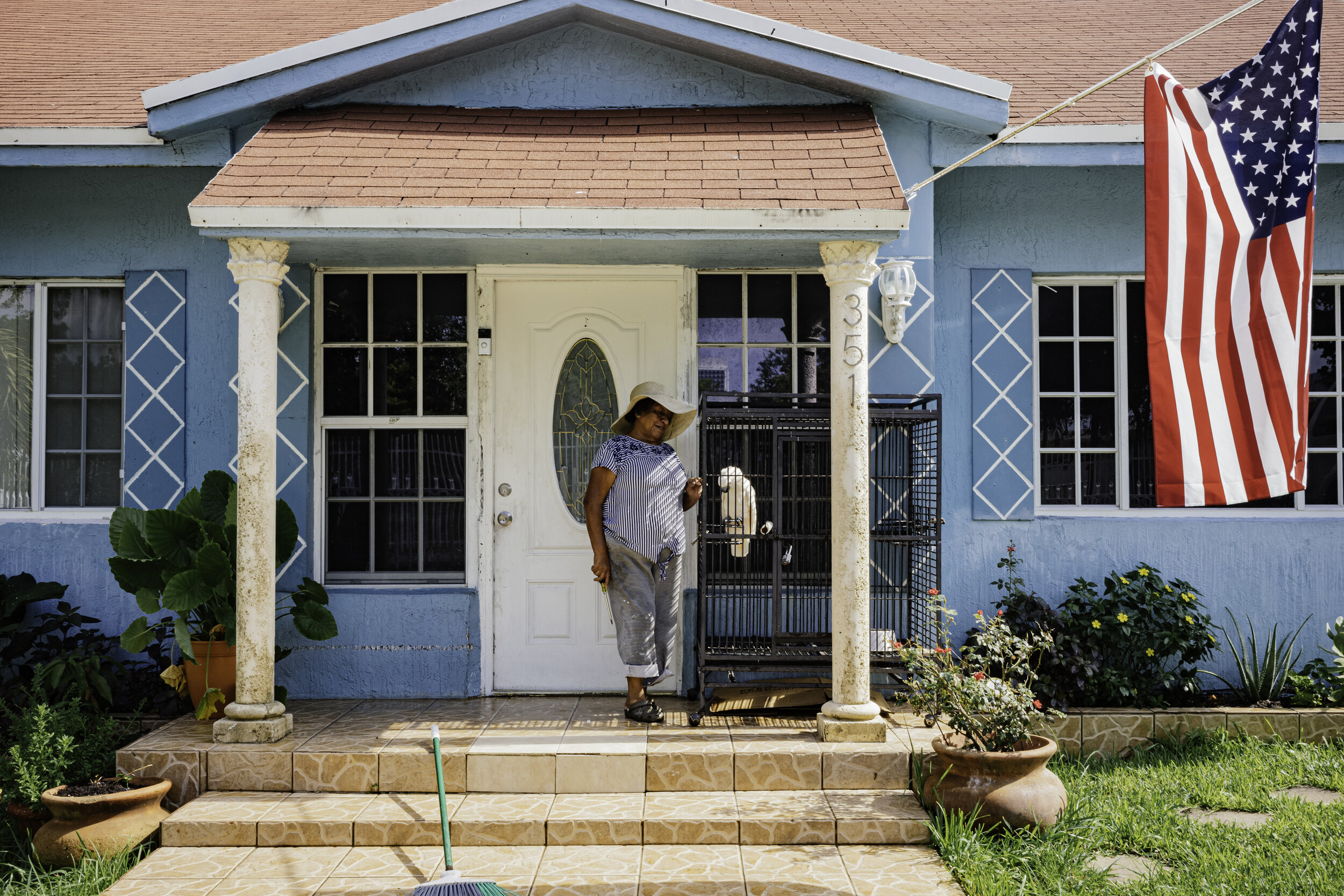
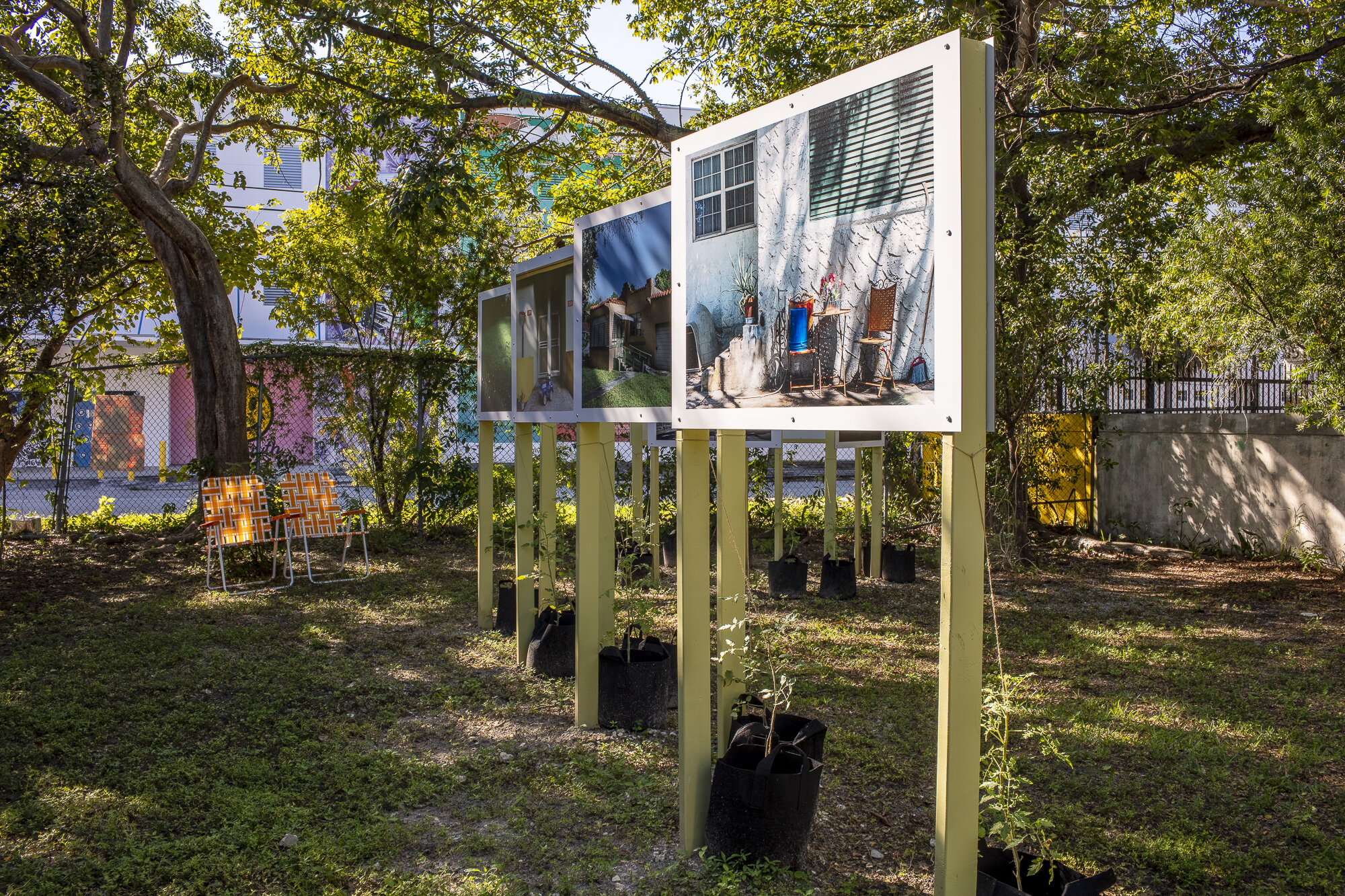
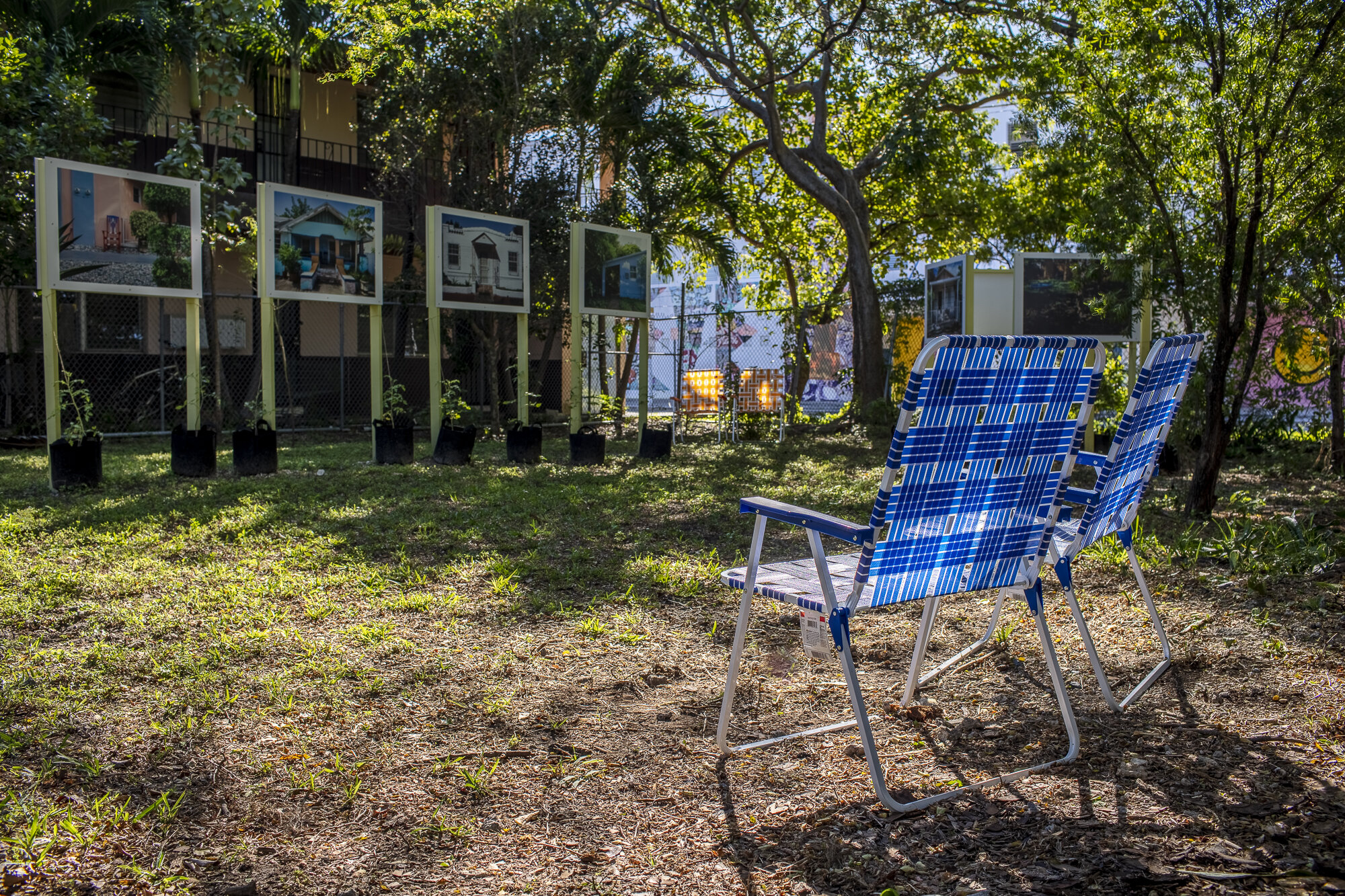
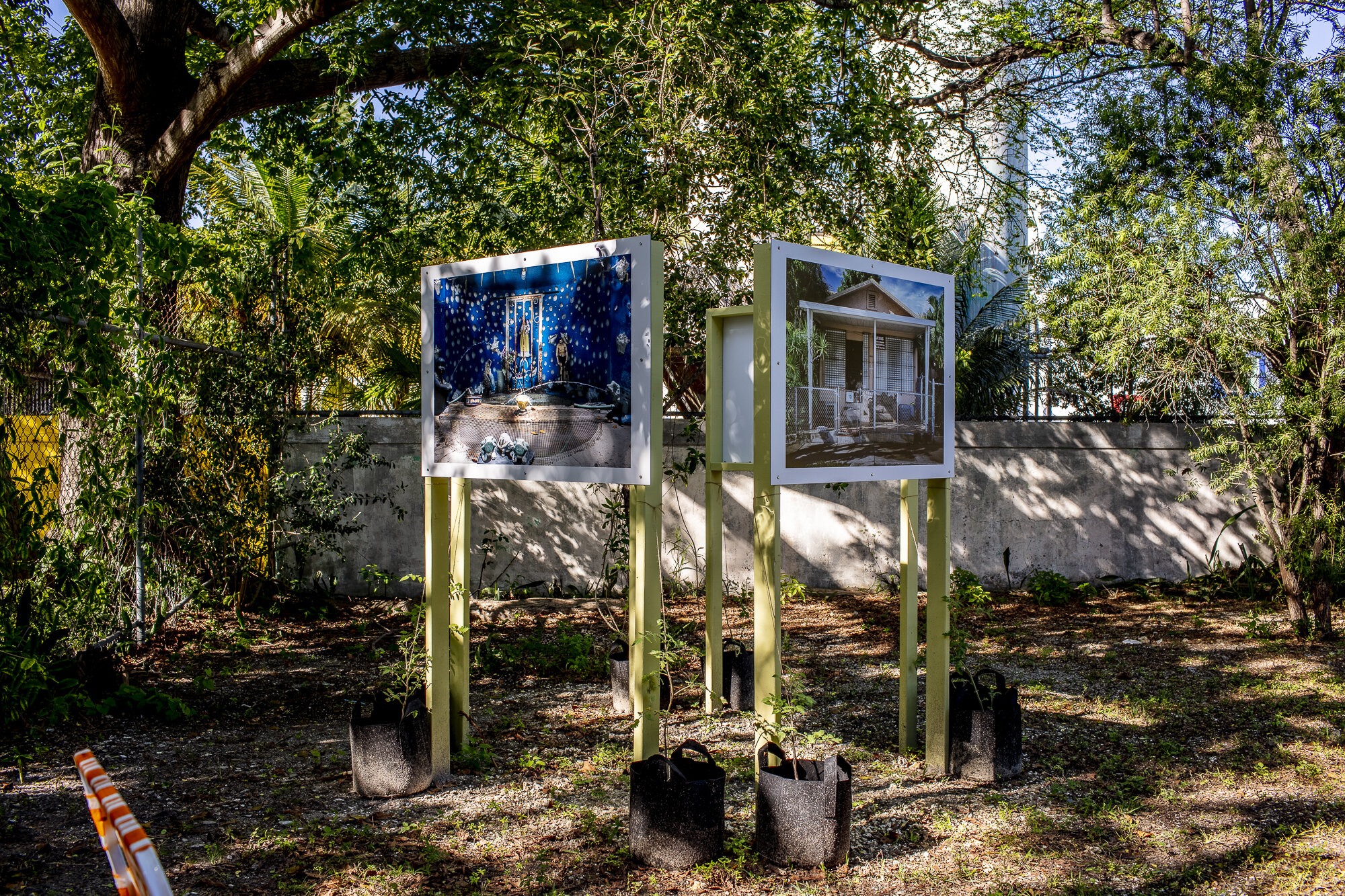
For the last six months, Clara Toro has photographed different neighborhoods throughout Miami: Little Havana, Allapattah, North Miami, Wynwood Norte, among others. The latter, home to Bakehouse Art Complex for over thirty years, has a unique cultural character that reminds the artist of her hometown of Medellín, Colombia. For Toro, photographing the neighborhood is a sensory experience: “Walking around and listening to the music that comes from the houses, women cooking in the kitchen, children playing in the patios, transports me to the city of my youth.”
Stakeholders: Wynwood Norte is a selection of eighteen photographs from a larger body of work by Toro that documents the single-family residences of Wynwood Norte. Her images of homes surrounded by swings, inflatable pools, toys, tables, and chairs hint at the life of their occupants and capture the essence of the neighborhood over time. They prompt the viewer to think about people through the spaces they occupy; each place becomes a reflection of its inhabitants, an opportunity, not only to imagine the possibilities of the lives within, but also to consider how notions of public and private spaces function to promote shared communal values and civic engagement.
The neighborhood of Wynwood Norte, composed of mostly working-class families and elders who have lived there for decades, is home to a large immigrant population hailing predominantly from Central America and the Caribbean. Through her practice, Toro examines Miami’s story of immigration and its role in the development of the city, and in Stakeholders specifically, she captures expressions of multiple cultures — a rocking chair painted with the Puerto Rican flag, a shell-adorned shrine to Our Lady of Divine Providence — which despite the passage of time, continue to reflect and define this historic urban neighborhood.
Toro, who tends to work early in the day to capture the light, seeks to create images that transmit stillness of a community just beginning to awaken, while simultaneously embodying the liveliness of a place abounding in daily life and quotidian occurrence. Printed and installed on wooden stakes, the images exude a meditative quality that invites viewers to slow their pace, stroll through the garden, observe the details, and reflect on their own homes and the character of their own neighborhoods.
The impetus for this photographic project comes from Toro’s interest in documenting a place that is always in flux, in a city that insists on and values the new. During her early morning walks, she eventually began encountering neighbors, who were interested in her project and pleased that she was capturing the neighborhood as it now stands. “I want to create an archive of what is here now. When the neighborhood looks different in ten, fifteen years, I want to be able to go back and look at these pictures.”
About the Artist
Clara Toro graduated with a degree in Industrial Design from Universidad Pontificia Bolivariana in 1987. In 1988, she moved to Montreal and then New York, attending Université de Montreal and Pratt Institute respectively, taking courses towards a Master’s degree in Industrial Design and Marketing. She moved to South Florida from New York in 1992, where she pursued a career as an educator from 1996 through 2008. Over the course of the last several years, Toro has dedicated herself full-time to the study and practice of photography and now serves as the Director of Roberto Mata School of Photography.
